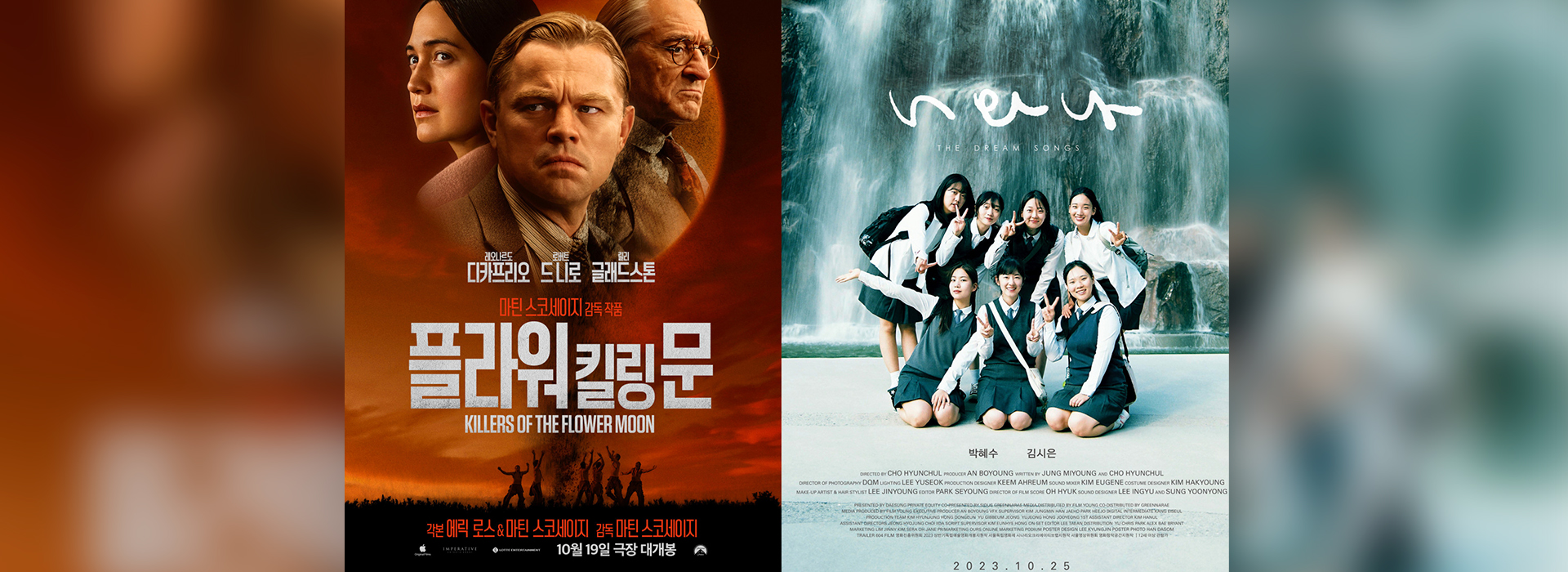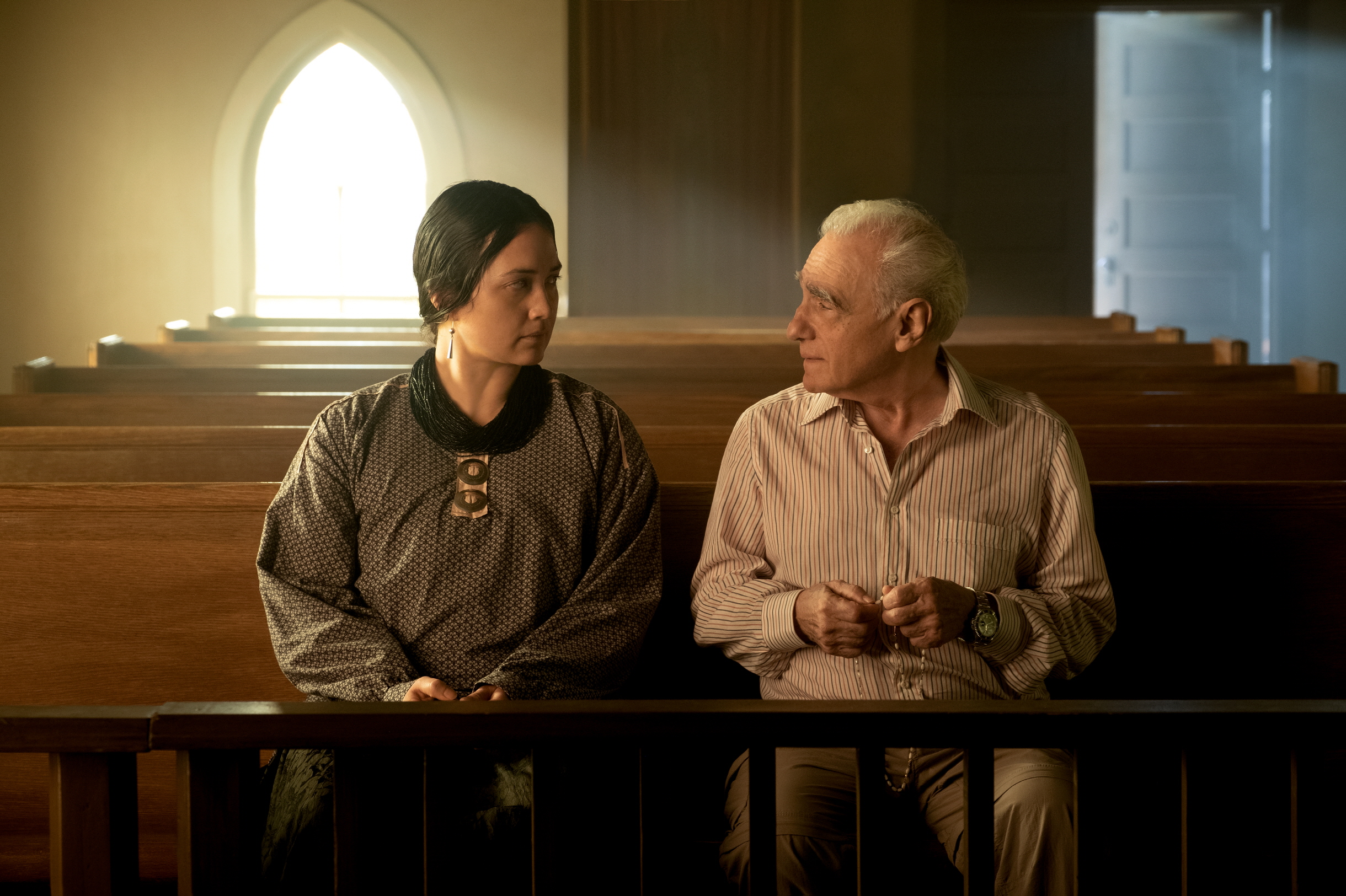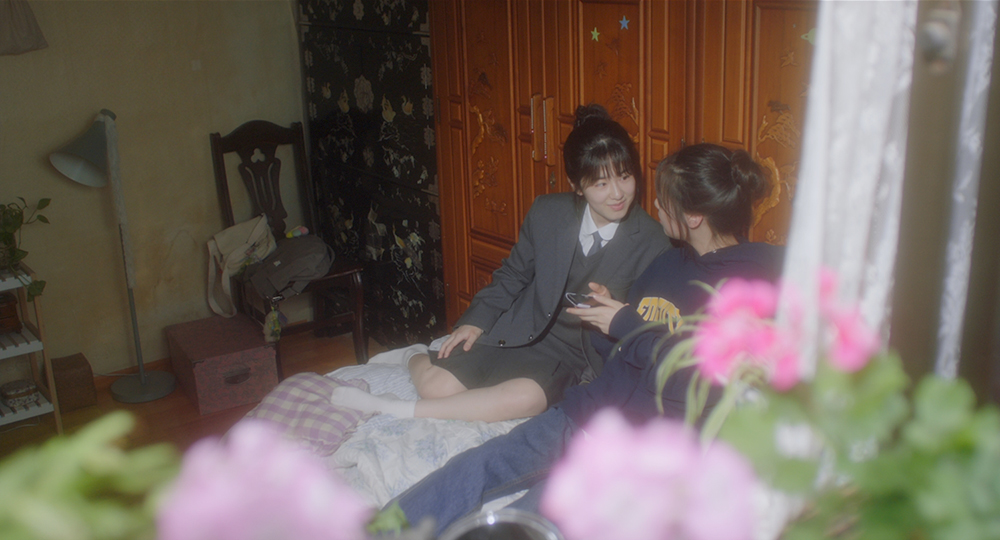
This article contains spoilers.
Before becoming a writer for a film magazine, I was a history major. I was an editor for the Western history department’s newspaper, and—perhaps because I had the magazine spirit in me all along—I went as far as to write a supplemental insert with a chronological list of films related to Western history. It was perhaps a subconscious way to rationalize my interests shifting from history to movies. History may seem like this big, unmoving rock that never changes, but it’s also a wet, slippery one that eludes any foothold. We call the records written down by qualified scholars in the wake of controversy and other major events “history,” but in fact, the collective consciousness and the past held there functions as a part of history, too. And among all art forms, movies have a particular influence on the way we remember days we weren’t actually alive for. That, in turn, is because cinema is an art form based on re-enactment. For this reason, historians are both fascinated by and wary of movies. In my opinion, a film director inevitably takes on the role of historian who makes the present into the past. Historians, on the other hand, must have a couple of film directors in their heart.
-
 ©️ Lotte Entertainment
©️ Lotte Entertainment
Continuing off his 2019 film The Irishman, Martin Scorsese’s latest work, Killers of the Flower Moon, is another effort to rewrite American history. Given the director’s long-held interest in the Catholic concepts of original sin and salvation, Killers of the Flower Moon isn’t so far removed from the series of gangster flicks he made starting with Mean Streets in 1973, given that this new film looks at the original sin inherent to the white supremacy built into the United States’ race to become a superpower. In the 1920s, Oklahoma became the first area where people of color, including African Americans from the South and Native Americans whose land had oil underneath, were accumulating wealth, and their economic prosperity, reported widely in the media, became the target of white envy and ire. The most violent expressions of this hatred were the Black Wall Street massacre in Tulsa in 1921 and the Osage Indian murders of 24 people between 1921 and 1923. One particularly vile point about the latter is that the murderers were friends, spouses, and even parents to some Osage. The fact that the Osage couldn’t sell their land to white people but that white people were able to inherit the same land from Osage people turned good fortune into a deadly curse.
Killers of the Flower Moon is an adaptation of David Grann’s non-fiction work Killers of the Flower Moon: The Osage Murders and the Birth of the FBI, but the movie shifts the focus from the FBI agents who were investigating the cases to the community where the Osage and the white murderers coexist. As a result, Scorsese’s film differentiates itself from other movies where righteous, messiah-like white characters punish the bad white characters and save the people of color. Leonardo DiCaprio was originally cast as FBI agent Tom White, but following script rewrites, he instead took on the role of Ernest Burkhart, a white man married to Mollie (Lily Gladstone), an Osage woman. Robert De Niro plays Ernest’s uncle William Hale, a prominent local figure claiming to be a friend to the Osage. De Niro has played many different roles in Scorsese’s films to date, typically those whose anxiety translates into violence, but in this latest role, he never ends up with literal blood on his hands (the only violence Hale directly inflicts is spanking Ernest).
The film makes it clear that its Osage characters are not gullible victims. Mollie and other Osage women know that the main reason the white men propose to them is because they’re after an oil inheritance, but they marry those men all the same because they feel there’s something they can benefit from in the arrangement as well. Mollie, one of the director’s most complex characters, is by no means naive or desireless. Mollie knows what Ernest wants and that he’s not the brightest man in the world, but she marries him regardless, finding him cute and attractive. Once the Osage people start dying of disease, addiction, and in suspicious accidents, however, she hires a private detective and even goes to Washington D.C. to ask the federal government to step in and investigate, even though she’s risking positioning herself as the number-one target for murderers by doing so. In the third act of the film, the newly founded FBI acts on the Osage’s requests, and an investigation, led by Tom White (Jessie Plemons), is then underway to dig into the actions of Mr.Hale and Ernest.
As to why this highly lauded, 80-year-old director chose to tackle Killers of the Flower Moon, I’d wager to say that his intention is to raise awareness of the lesser-known parts of US history. It’s about resurrecting the forgotten and allowing invisible people to be seen. But there’s more to it than that. The movie lays out the criminals’ identities, motives, and means right at the beginning; it’s not a suspense thriller asking audiences who, when, or why. The central question is really more about how. Ernest loves Mollie dearly, yet at night, he lynches Osage people and kills off his wife’s family members. Is he blinded by his uncle’s position of authority and unaware of the true impact of his actions? Is he just stupid? Is he schizophrenic? Killers of the Flower Moon shows how Ernest’s contradictory thought process, which is difficult to comprehend from a modern perspective, isn’t about one person’s particular pathology but the very essence of white supremacy. If we were to give it a label, it might be something like ignorance through willful negligence. This contradiction of loving someone while simultaneously threatening their well-being is only possible when that person isn’t recognized as having equal rights and needs. People are capable of loving others they view as inferior—or at least, they can believe it to be love. In the film, though the white characters dine with the Osage and befriend them, they also bluntly state their belief that Osage lives are inherently worth less. There is, for example, one contract worker who says he’ll take on any work but murder, then changes his mind when told the target is Native American. Another character brazenly consults with a lawyer over whether he could receive an inheritance if his Osage wife’s children were to die. As Hale puts it in brief, the white people believe that having the Osage wealth change hands into their own is an act of restoring the natural order of things and a manifestation of the principle of survival of the fittest. The scariest thing about Killers of the Flower Moon isn’t so much the planned murders of more than 24 people but the air of conspiracy that plots to silently look away. These are the very mechanics of racism, a shadow of societal failure that looms large over US society to this day. And cinema, as an art form, allows us to explore such complicated issues as a whole without postulating any particular thesis. Killers of the Flower Moon ends in a very unusual way: After wrapping up Ernest and Mollie’s story, Scorsese suddenly breaks the fourth wall and moves to a radio set. Here, a live show is taking place: a reenactment of the Osage murders, as portrayed entirely by white voice actors. It’s no different from the story we’ve been invested in for three hours by this point, but it takes on an entirely different perspective. This true, tragic piece of history becomes an entertaining play that positions the FBI as heroes; a cut-and-dried story of good triumphing over evil. This stark contrast seems to be the director’s explanation as to why Killers of the Flower Moon had to be experienced vicariously in the form of cinema. Not only that, but Scorsese also makes a cameo of his own in this epilogue on the radio show, as if acknowledging his limitation as just another white storyteller.
Film has traditionally portrayed Native Americans in a one-dimensional way, painting them with a stigma of victimization. Scorsese’s film contributes to the collective memory we call history by fleshing out the characters to tell of a rich culture and the people in it who even employed white people under them. Scorsese, art director Jack Fisk, and costume designer Jacqueline West spent much of their $200 million budget on recreating Osage life, famous for its outstanding aesthetics, which the community’s wealth allowed them to preserve through portraits, pictures, and home movies. The most moving images in the entire film are the scenes depicting the deaths of the Osage people, showing a reserved, quiet restraint compared to other scenes. Every artist comes to embrace a different style later in life. Scorsese’s autumn period, which began with Silence and continues on with Killers of the Flower Moon, is a mature response from the long-acclaimed director to criticisms that his films have glamorized toxic masculinity and violence.
-
 ©️ FILMYOUNG
©️ FILMYOUNG
Though Cho Hyun-chul has far less experience than Scorsese, the Korean director’s first feature film, The Dream Songs, is another movie that aims to revive the past. But this movie explores the desire to do the impossible and stop time altogether. A day before she’s set to go on a field trip, high school student Semi(Park Hye-su) suddenly wakes up from a sad dream and finds herself back in class. Though she can’t remember what happened in the dream, her cheeks are streaked from tears. Semi consequently grows anxious about her best friend, Ha-eun (Kim Si-eun), who had been hit by a bicycle and won’t be about to go on the trip. Semi decides to leave school early and visit her friend in the hospital. On the surface, Semi is there to persuade Ha-eun to come on the trip with her anyway, but her true motivation for visiting is because she finally wants to tell Ha-eun that she loves her. It’s to be an important day for the two girls. The movie unfolds as a dreamy spring day, complete with a parrot slowly learning how to say “I love you,” a lost dog, a broken clock, and a hazy mirror. We learn while watching that the girls live in the city of Ansan, and their school will be taking a ferry for Jeju Island. In the 10 years since the Sewol ferry disaster left a permanent scar on Korean society, documentarians have attempted to grapple with the facts of the unimaginable tragedy. The intervening years have created a gap that was necessary for storytellers to swallow the disaster and give fictional forms to it.
Steven Spielberg’s movie A.I.: Artificial Intelligence is about a robot named David who goes out in search of love in order to become a real boy, and ends up having the best day of his life with his mother thanks to a group of aliens. Similarly, in The Dream Songs, director Cho gives his characters the best possible day they can have considering their unexpected parting. What Cho envisions as the most beautiful day a person can experience is one that ends in the painful tears of first love and one that’s filled with acting foolish, helping others, and ultimately being tugged in by the ones who love you. The film’s original Korean title translates literally to “you and I,” both a contradiction of, and consistent with, the overarching theme. As this one day leading up to the field trip comes to an end, it becomes harder and harder to say who among Semi and Ha-eun is lost at sea and who is having a sad dream. The audience finally comes to the realization that the two girls ultimately die together, but in another way, they will also live together forever. But even the director, who seems to keep himself at arm’s length from his own grief throughout most of it, can’t hold back his emotions when the two young girls say their parting goodbyes at the end of the day before that fateful trip. It’s normal for couples to want to spend a little extra time together each time they say good-bye, but the audience of The Dream Songs will painfully find themselves wishing for the impossible: that the movie will never end so that tomorrow never has to come for its characters.
Following along with Semi and Ha-eun’s story, we’re made privy to the infinite ability to love two girls possess—girls crying with strangers, befriending animals, and even emotionally empathetic to a glass of water balances perilously at the edge of table. And that night, the girls realize they both are in love with each other, beaming with the implied promise of many days together ahead of them. The Dream Songs stands as a reminder to the sheer amount of love that filled the hearts of the young girls and boys who went to sea that fateful spring day—love they would have spread out into the world. And I ask myself, where did all the love go?
Unauthorized reproduction and distribution prohibited.